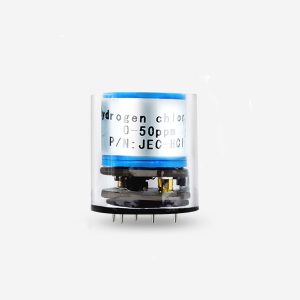Air pollution has become a significant global problem, leading to severe environmental and health consequences. Air pollutants such as carbon dioxide, methane, and nitrogen oxides are harmful to human health, wildlife, and ecosystems. The integration of gas sensors in monitoring air quality has become crucial in identifying and mitigating air pollution. In this article, we will explore the role of gas sensors in monitoring pollutants, their applications, and how they contribute to creating cleaner and healthier environments.

I. Understanding Air Pollution and Its Consequences
Air pollution occurs when harmful gases, particles, and biological molecules are introduced into the atmosphere. These pollutants can cause respiratory diseases, cardiovascular problems, and reproductive issues in humans. Moreover, air pollution can lead to reduced crop yields, ecological imbalances, and harm to wildlife and marine ecosystems.
II. The Role of Gas Sensors in Monitoring Pollutants
Gas sensors can detect and quantify air pollutants in the atmosphere, providing real-time data on pollutant levels. These sensors work by detecting changes in electrical conductivity or optical properties that occur when the analyte reacts with sensor materials. By continuously monitoring the concentration of specific pollutants, gas sensors can provide data that leads to informed decisions about mitigation strategies.
III. Applications of Gas Sensors in Monitoring Pollutants
Gas sensors find various applications in monitoring pollutants, including:
Industrial Emissions: Gas sensors are used to monitor volatile organic compounds (VOCs) and other pollutants emitted from factories, refineries, and chemical plants.
Transportation Emissions: Gas sensors can detect the exhaust fumes emitted from vehicles, aircraft, and ships, allowing for better regulation of emissions.
Indoor Air Quality: Gas sensors are commonly used to monitor indoor air quality in buildings, schools, and hospitals, where high pollutant concentrations can have severe health consequences.
Environmental Monitoring: Gas sensors can detect and monitor pollutants in the environment, including those emitted by wildfires, agricultural operations, and other sources.
IV. The Advantages of Gas Sensors in Monitoring Pollutants
Gas sensors offer numerous advantages over traditional air quality monitoring methods, including:
Real-time Data: Continuous and real-time monitoring enables the detection of changes in pollutant levels, allowing for prompt action to reduce exposure.
Accuracy: Gas sensors provide accurate data on specific pollutants, enabling governments, businesses, and individuals to take targeted mitigation measures.
Affordability: Gas sensors are considerably more affordable than traditional air quality monitoring methods, making them accessible to a broader range of users.
V. Future Developments in Gas Sensor Technology
Gas sensor technology is continuously evolving, with increased focus on developing sensors that can monitor multiple pollutants simultaneously, provide finer grained data, and reduce the need for calibration. Research is also underway to develop sensors that can detect emerging pollutants, such as microplastics, nanoplastics, and plasticizers, which pose unique risks to human and environmental health.

VI. Conclusion
Air pollution is a significant global problem that requires urgent action. The integration of gas sensors in monitoring pollutants enables the detection of specific pollutants, contributing to cleaner and healthier environments. With continuous and accurate monitoring, gas sensors inform decision-making, enabling smarter regulation, and targeted mitigation strategies. As gas sensor technology continues to evolve, it holds great promise in addressing the emerging challenges of air pollution.
 : +86 155 8830 2704
: +86 155 8830 2704 : jxdziot@gmail.com
: jxdziot@gmail.com
